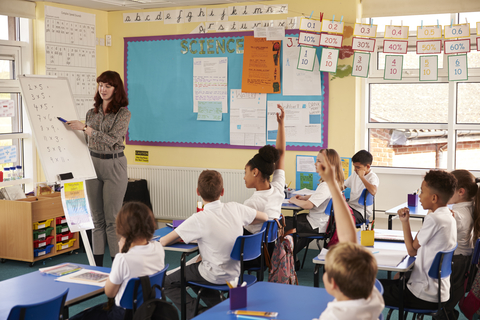The Public and Private School System in Australia
Whilst Australian school enrolment trends are not solely influenced by levels of funding for government and non-government schools, evidence suggests that such arrangements can influence parental decisions about whether to enrol their children in the public or private school sector. It therefore makes sense to begin a discussion of enrolment trends with an overview of how these two types of school are funded.
Government and non-government schools have been part of the Australian education system since 1848. Government schools, also known as public or state schools, are administered by state or territory governments, unlike non-government ones. In the Australian context, a high proportion of independent schools are religious, and many are affiliated with some form of Christianity. The Catholic school sector is the largest non-government school group in the country, followed by the Anglican school system.
Both public and private schools receive money from federal and state or territory governments. Currently, government schools receive the highest amount of state and territory funding, while private institutions receive three of every five dollars of Commonwealth funding. Public schools are almost wholly government-funded, and systemic Catholic schools receive substantial government funding, whereas other non-government institutions mostly rely on private income from various sources, including school fees and donations.
The funding of independent schools by the government sets Australia apart from many other countries including the US, Canada, and New Zealand, where private schools receive little or no government funding.
The roots of this entrenched funding model can be traced to the 1970s. The post-war baby boom stretched the resources of both government and Catholic schools to breaking point. Catholic institutions often educated students from poorer families, but the Catholic school system was on the brink of collapse. The federal government allocated funding to prevent this, as the closure of Catholic establishments would put even greater strain on already overcrowded government schools. This solution, combined with the government’s support of consumer choice, and more specifically a parent’s right to school choice, paved the way for the continued allocation of government funding to independent schools.
Facts, Figures, and Enrolment Trends: A Shift Toward Government Schools?
Recently, government reports and newspaper headlines claim that private school enrolments will decline over the next 10 years, with only 21% of students between 2018 and 2027 expected to enrol at non-government schools, compared to the current 35%. This downward trend appears to be supported by ABS figures which show a slight increase in public school enrolment over the past two years. In 2017, government school enrolments rose from 65.4% in 2016 to 65.6%, while the independent school share increased from 14.4 to 14.5%, and Catholic school enrolment fell from 20.2 to 19.9%.
This development has been hailed as a reversal of a 50-year trend towards privatisation, during which government school enrolments fell from 77% in 1966 to 65% in 2018. However, this view is simplistic and misleading for the following reasons:
- The Australian population is growing fast, leading to increased enrolments in almost all school sectors. In 2017, the number of full-time students increased by 1.28%, leading to a total of 3,849,225 students.
- While enrolment in public primary schools increased 70% in 2018, public high school enrolments have fallen below 60%. In Australia, the total proportion of students in private schools is 35%, and 41% in high schools, or more than one third of Australian students overall. These figures are much higher than the 18% of students who attend private schools in the average OECD country.
- Since 2010, the average independent schools’ share of enrolments has increased, and is now above 18%. Taken as a whole, from 1990 to 2016, the average independent schools sector (excluding Catholic schools) has experienced the largest proportional increase (6.39%). Conversely, the public school system experienced the largest proportional decrease from 1990 to 2016 (8.87%).
- Some public high schools are struggling financially due to ongoing funding cuts and restrictive policies that attack and undermine their operation. From the 1990s onwards, many government schools have amalgamated with others, or closed for various reasons, including a supposed lack of enrolment numbers. Unlike private schools, government institutions must constantly prove their economic viability. Furthermore, tight education budgets prevent the government from building new schools and the building process is often lengthy and hampered by restrictions. Consequently, the total percentage of Australian public schools has fallen by 2%, while non-government institutions have increased by 1%.
- Wealthy independent schools have stepped in to fulfil the ever-increasing demand for new schools to serve sprawling urban communities in areas where the government is unable to meet demand and build new schools quickly. The Catholic school system has built schools in many such areas, including Point Cook on the outskirts of Melbourne.
- In Australia, over one-fifth of school funds come from contributions from households, one of the highest levels of private expenditure in the OECD. In other OECD countries an average of 90% of funds allocated to schools come from the government.
- While many other OECD governments do fund private schools, the amount of government funding allocated is much lower than in Australia, and the use of such funding is strictly regulated. As a “high funding and low regulation” country, Australia is at the opposite end of this scale. Successive governments have bolstered private school funding, and promised that no school will be worse off..
- The view that private schools are superior to public schools is widespread and commonly accepted in Australia. This is fuelled by visible funding disparities between government and non-government schools, particularly with regard to secondary schools. According to a 2015 steady, many parents will consider sending children to private high schools with twice the level of resources per student and more than ten times the amount spent on capital works than the local public high school. Private schools spend their extra funding on sports programmes and extracurricular activities which the stretched budgets of many government high schools can’t accommodate.
- Finally, high-fee private schools often have a prestigious reputation for academic excellence which extends to less expensive or newly established private schools, and even selective public schools. This counts for a lot in a context where examination and assessment results are all-important.
These conditions have led to the growth of the independent school sector and the decline of public schools across the country.
Private Schools Are Here to Stay
Given the situation outlined above, it is unlikely that non-government schools will disappear from the Australian education system anytime soon, unless more is done to reduce funding disparities between private and public schools and enhance the reputation of public schools in general. As the current situation is generally unfavourable to government schools, it is unrealistic to view slight increases in government school enrolments as a move away from increasing privatisation of the Australian school system.
Unless changes are made to level the playing field so that public schools can compete with private institutions on an equal footing, the status quo will remain unchanged: government schools will continue to decline, while independent ones will continue to attract students and exert greater influence over the education system.
Sources
“Australian Social Trends September 2011: Are all schools uniform?”ABS. 2011.
“4221.0 – Schools, Australia, 2017.” ABS. 2 February 2018.
Hanrahan, Catherine. “Here’s how Australia’s schools are funded – and we promise not to mention Gonski.” ABC News. 20 April 2018.
Jacks, Timnar, and Royce Millar. “Private school explosion on Melbourne’s fringe.” The Age. 7 July 2017.
Joseph, Blaise. “Are non-government schools really on the way out?” The Centre For Independent Studies. 27 April 2018.
Koziol, Michael. “Private school enrolments projected to flatline as parents choose public.” The Sydney Morning Herald. 21 April 2018.
Rowe, Emma. “Fewer students are going to public secondary schools in Australia.” The Conversation. 19 June 2017.
Windle, Joel. “School choice: no great love for the private path, but parents follow the money.”The Conversation. 27 April 2015.


